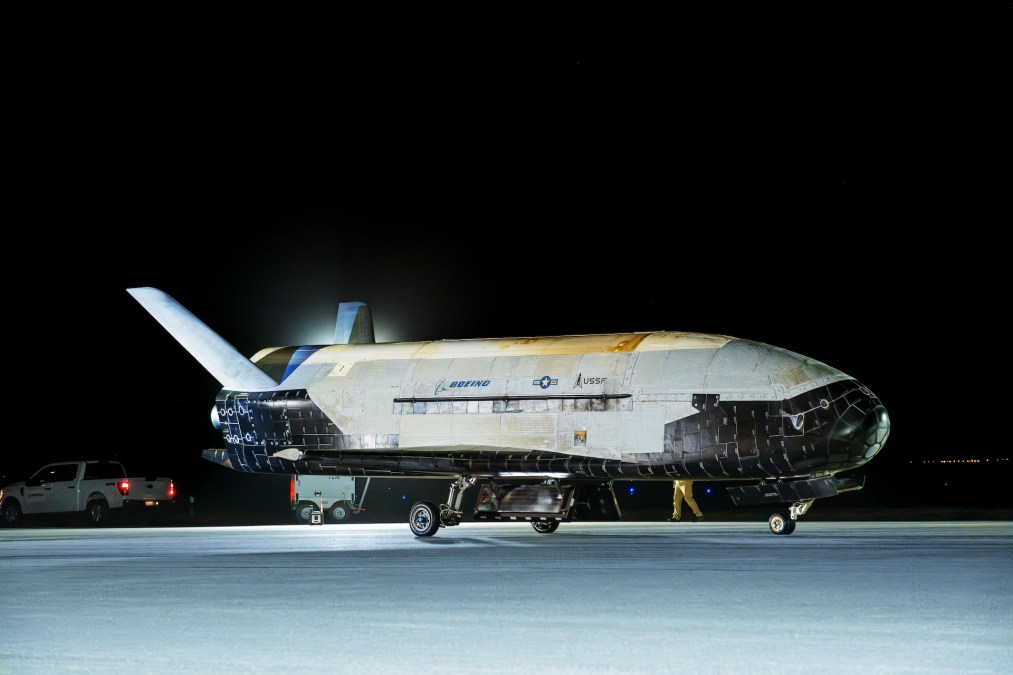Next X-37B space plane mission will test laser communications, quantum sensor for US military

The Pentagon’s secretive X-37B orbital test vehicle is scheduled to launch for another mission next month, this time with a focus on demonstrating laser communications and a quantum inertial sensor.
This will be the eighth mission for the Boeing-built space plane, which has served as an on-orbit, experimental testbed for emerging technologies being developed by the Pentagon and NASA. The platform is designed to conduct long-duration flights before returning to Earth, where it can be repurposed for future missions. The system has already spent more than 4,200 days in space, according to Boeing.
Personnel are currently preparing the vehicle — which will fly with a service module — for another launch at the Kennedy Space Center in Florida, according to a press release issued Monday. Mission partners for OTV-8, as the effort has been dubbed, include the Air Force Research Laboratory and the Silicon Valley-headquartered Defense Innovation Unit.
The service module will expand capacity for laser comms demonstrations, per the release.
Laser communications demos in low-Earth orbit “will contribute to more efficient and secure satellite communications in the future. The shorter wavelength of infrared light allows more data to be sent with each transmission,” Chief of Space Operations Gen. Chance Saltzman wrote in post on X.
“We’re also demoing the world’s highest performing quantum inertial sensor ever used in space. Bottom line: testing this tech will be helpful for navigation in contested environments where GPS may be degraded or denied,” he added.
According to Boeing’s press release, the mission will include the first in-space demonstration of a “strategic grade” quantum inertial sensor.
“OTV 8’s quantum inertial sensor demonstration is a welcome step forward for the operational resilience of Guardians in space,” Space Delta 9 Commander Col. Ramsey Hom said in a statement. “Whether navigating beyond Earth-based orbits in cis-lunar space or operating in GPS-denied environments, quantum inertial sensing allows for robust navigation capabilities where GPS navigation is not possible. Ultimately, this technology contributes significantly to our thrust within the Fifth Space Operations Squadron and across the Space Force guaranteeing movement and maneuverability even in GPS-denied environments.”
The launch date is targeted for Aug. 21, according to Saltzman.
During the space plane’s most recent mission, which started in 2023 and wrapped up earlier this year, efforts included experimenting with operating in new orbital regimes, testing space domain awareness technologies and investigating radiation effects, according to officials.
For the mission before that, the X-37B spent a whopping 908 days in orbit.






